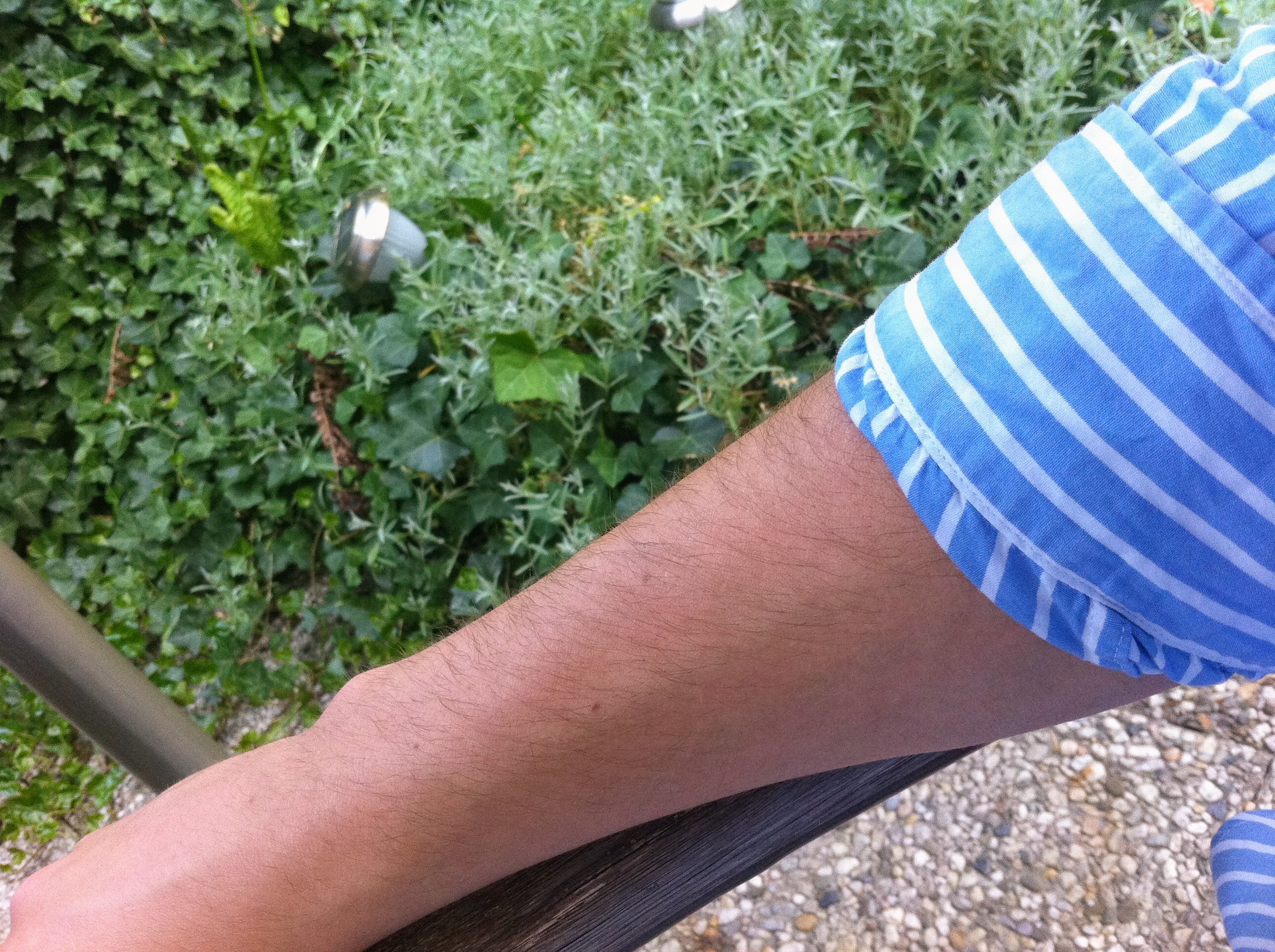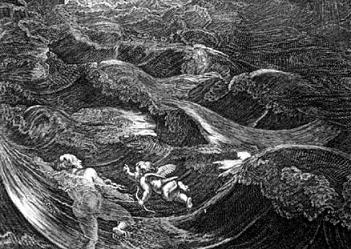|
Shaving
Shaving is the removal of hair, by using a razor or any other kind of bladed implement, to slice it down—to the level of the skin or otherwise. Shaving is most commonly practiced by men to remove their facial hair and by women to remove their leg and underarm hair. A man is called ''clean-shaven'' if he has had his beard entirely removed. Both men and women sometimes shave their chest hair, abdominal hair, leg hair, underarm hair, pubic hair, or any other body hair. Head shaving is much more common among men. It is often associated with religious practice, the armed forces and some competitive sports such as swimming, running, and extreme sports. Historically, head shaving has also been used to humiliate, punish, for purification or to show submission to an authority. In more recent history, head shaving has been used in fund-raising efforts, particularly for cancer research organizations and charitable organizations which serve cancer patients. The shaving of head hair i ... [...More Info...] [...Related Items...] OR: [Wikipedia] [Google] [Baidu] |
Straight Razor
A straight razor is a razor with a blade that can fold into its handle. They are also called open razors and cut-throat razors. The predecessors of the modern straight razors include bronze razors, with cutting edges and fixed handles, produced by craftsmen from Ancient Egypt during the New Kingdom (1569 — 1081 BC). Solid gold and copper razors were also found in Ancient Egyptian tombs dating back to the 4th millennium BC. The first steel-edged cutthroat razors were manufactured in Sheffield in 1680. By the late 1680s, early 1690s, razors with silver-covered handles along with other Sheffield-made products known as "Sheffield wares" were being exported to ports in the Gulf of Finland, approximately 1200 miles (1931km) from Sheffield. From there, these goods were probably sent to Finland and even Russia. By 1740, Benjamin Huntsman was making straight razors complete with decorated handles and hollow-ground blades made from cast steel, using a process he invented. Huntsman's p ... [...More Info...] [...Related Items...] OR: [Wikipedia] [Google] [Baidu] |
Beard
A beard is the hair that grows on the jaw, chin, upper lip, lower lip, cheeks, and neck of humans and some non-human animals. In humans, usually pubescent or adult males are able to grow beards. Throughout the course of history, societal attitudes toward male beards have varied widely depending on factors such as prevailing cultural-religious traditions and the current era's fashion trends. Some religions (such as some sects of Islam, and Sikhism) have considered a full beard to be essential and mandate it as part of their observance. Other cultures, even while not officially mandating it, view a beard as central to a man's virility, exemplifying such virtues as wisdom, strength, sexual prowess and high social status. In cultures where facial hair is uncommon (or currently out of fashion), beards may be associated with poor hygiene or an unconventional demeanor. In countries with colder climates, beards help protect the wearer's face from the elements. Beards also provide ... [...More Info...] [...Related Items...] OR: [Wikipedia] [Google] [Baidu] |
Razor
A razor is a bladed tool primarily used in the removal of body hair through the act of shaving. Kinds of razors include straight razors, safety razors, disposable razors, and electric razors. While the razor has been in existence since before the Bronze Age (the oldest razor-like object has been dated to 18,000 BC), the most common types of razors currently used are the safety razor and the electric razor. History Razors have been identified from many Bronze Age cultures. These were made of bronze or obsidian and were generally oval-shaped, with a small Tang (tools), tang protruding from one of the short ends.Warwickshire County Council: New Prehistoric Archaeology Objects "Even furthe ... [...More Info...] [...Related Items...] OR: [Wikipedia] [Google] [Baidu] |
Head Shaving
Head shaving is a form of body modification which involves shaving the hair from a person's head. People throughout history have shaved all or part of their heads for diverse reasons including aesthetics, convenience, culture, fashion, practicality, punishment, a rite of passage, religion, or style. Early history The earliest historical records describing head shaving are from ancient Mediterranean cultures such as Egypt, Greece, and Rome. The Egyptian priest class ritualistically removed all hair from head to toe by plucking it. As a symbol of subordination Enslaved peoples In many cultures throughout history, cutting or shaving the hair on men has been seen as a sign of subordination. In ancient Greece and much of Babylon, long hair was a symbol of economic and social power, while a shaved head was the sign of a slave. This was a way of the slave-owner establishing the slave's body as their property by literally removing a part of their personhood and individuality. Military ... [...More Info...] [...Related Items...] OR: [Wikipedia] [Google] [Baidu] |
Barber
A barber is a person whose occupation is mainly to cut, dress, groom, style and shave men's and boys' hair or beards. A barber's place of work is known as a "barbershop" or a "barber's". Barbershops are also places of social interaction and public discourse. In some instances, barbershops are also public fora. They are the locations of open debates, voicing public concerns, and engaging citizens in discussions about contemporary issues. In previous times, barbers (known as barber surgeons) also performed surgery and dentistry. With the development of safety razors and the decreasing prevalence of beards in Anglophonic cultures, most barbers now specialize in cutting men's scalp hair as opposed to facial hair. Terminology In modern times, the term "barber" is used both as a professional title and to refer to hairdressers who specialize in men's hair. Historically, all hairdressers were considered barbers. In the 20th century, the profession of cosmetology branched off ... [...More Info...] [...Related Items...] OR: [Wikipedia] [Google] [Baidu] |
Body Hair
Body hair, or androgenic hair, is the terminal hair that develops on the human body during and after puberty. It is differentiated from the head hair and less visible vellus hair, which is much finer and lighter in color. The growth of androgenic hair is related to the level of androgens (often referred to as male hormones) and the density of androgen receptors in the dermal papillae. Both must reach a threshold for the proliferation of hair follicle cells. From childhood onward, regardless of sex, vellus hair covers almost the entire area of the human body. Exceptions include the lips, the backs of the ears, palms of hands, soles of the feet, certain external genital areas, the navel, and scar tissue. The density of hair – i.e. the number of hair follicles per unit area of skin – varies from person to person. In many cases, areas on the human body that contain vellus hair will begin to produce darker and thicker body hair during puberty, such as the first gr ... [...More Info...] [...Related Items...] OR: [Wikipedia] [Google] [Baidu] |
Underarm Hair
Underarm hair, also known as axillary hair, is the hair in the underarm area (''axilla''). Development Underarm or axillary hair goes through four stages of development, driven by weak androgens produced by the adrenal in males and females during adrenarche, and testosterone from the testicle in males during puberty. The importance of human underarm hair is unclear. It may naturally wick sweat or other moisture away from the skin, aiding ventilation. Colonization by odor-producing bacteria is thereby transferred away from the skin (see skin flora). File:Armpit by David Shankbone.jpg , Male axilla File:Womans armpit.JPG , Female axilla Function Reducing friction Armpit hair prevents skin-to-skin contact during activities that involve arm motion, such as running and walking. The same applies to pubic hair. Spreading pheromones The armpits release odor-containing pheromones, a naturally produced chemical that plays an important role in sexual attraction. Armpit hair ... [...More Info...] [...Related Items...] OR: [Wikipedia] [Google] [Baidu] |
Pubic Hair
Pubic hair is terminal body hair that is found in the genital area of adolescent and adult humans. The hair is located on and around the sex organs and sometimes at the top of the inside of the thighs. In the pubic region around the pubis bone, it is known as a ''pubic patch''. Pubic hair is also found on the scrotum in the male and on the vulva in the female. Although fine vellus hair is present in the area in childhood, pubic hair is considered to be the heavier, longer and coarser hair that develops during puberty as an effect of rising levels of androgens in males and estrogens in females. Pubic hair differs from other hair on the body and is a secondary sex characteristic. Many cultures regard pubic hair as erotic, and in most cultures it is associated with the genitals, which both men and women are expected to keep covered at all times. In some cultures, it is the norm for pubic hair to be removed, especially of females; the practice is regarded as part of personal hy ... [...More Info...] [...Related Items...] OR: [Wikipedia] [Google] [Baidu] |
Leg Hair
Leg hair is hair that grows on the legs of humans, generally appearing after the onset of puberty. For aesthetic reasons and for some sports, people shave, wax, epilate, or use hair removal creams to remove the hair from their legs: see leg shaving. The current Guinness World Record for world's longest leg hair belongs to Jason Allen of Tucson, Arizona at 8.84 inches (22.46 cm). Growth The real action of leg hair takes place below the skin or the epidermis. The cells that are in the hair follicles divide and multiply. When the space fills up in the follicle it pushes older cells out and that is what becomes the leg hair. After the older cells become hard and leave the follicle, they form a hair shaft. The hair shaft is mostly made up of dead tissue and a protein that is known as keratin. It is said that hair growth occurs during the "growing" phase of the follicle, and then retained as dead club hair during the "resting" phase. The old club hair might be lost within ... [...More Info...] [...Related Items...] OR: [Wikipedia] [Google] [Baidu] |
Swimming (sport)
Swimming is an individual or team racing sport that requires the use of one's entire body to move through water. The sport takes place in pools or open water (e.g., in a sea or lake). Competitive swimming is one of the most popular Olympic sports, with varied distance events in butterfly, backstroke, breaststroke, freestyle, and individual medley. In addition to these individual events, four swimmers can take part in either a freestyle or medley relay. A medley relay consists of four swimmers who will each swim a different stroke, ordered as backstroke, breaststroke, butterfly and freestyle. Swimming each stroke requires a set of specific techniques; in competition, there are distinct regulations concerning the acceptable form for each individual stroke. There are also regulations on what types of swimsuits, caps, jewelry and injury tape that are allowed at competitions. Although it is possible for competitive swimmers to incur several injuries from the sport, such as ... [...More Info...] [...Related Items...] OR: [Wikipedia] [Google] [Baidu] |
Personal Hygiene
Hygiene is a series of practices performed to preserve health. According to the World Health Organization (WHO), "Hygiene refers to conditions and practices that help to maintain health and prevent the spread of diseases." Personal hygiene refers to maintaining the body's cleanliness. Hygiene activities can be grouped into the following: home and everyday hygiene, personal hygiene, medical hygiene, sleep hygiene and Food safety, food hygiene. Home and every day hygiene includes hand washing, respiratory hygiene, food hygiene at home, hygiene in the kitchen, hygiene in the bathroom, laundry hygiene and medical hygiene at home. Many people equate hygiene with 'cleanliness,' but hygiene is a broad term. It includes such personal habit choices as how frequently to take a shower or bath, wash hands, trim Nail (anatomy), fingernails, and wash clothes. It also includes attention to keeping surfaces in the home and workplace clean, including bathroom facilities. Some regular hygiene prac ... [...More Info...] [...Related Items...] OR: [Wikipedia] [Google] [Baidu] |
Armed Forces
A military, also known collectively as armed forces, is a heavily armed, highly organized force primarily intended for warfare. It is typically authorized and maintained by a sovereign state, with its members identifiable by their distinct military uniform. It may consist of one or more military branches such as an army, navy, air force, space force, marines, or coast guard. The main task of the military is usually defined as defence of the state and its interests against external armed threats. In broad usage, the terms ''armed forces'' and ''military'' are often treated as synonymous, although in technical usage a distinction is sometimes made in which a country's armed forces may include both its military and other paramilitary forces. There are various forms of irregular military forces, not belonging to a recognized state; though they share many attributes with regular military forces, they are less often referred to as simply ''military''. A nation's military ... [...More Info...] [...Related Items...] OR: [Wikipedia] [Google] [Baidu] |









